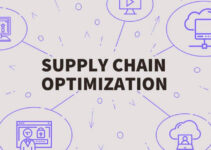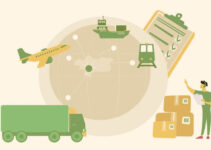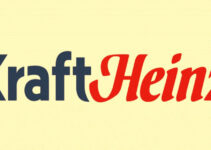The food Industry supply chain outlines various stages and steps involved from food production to consumption by involving multiple parties. The food supply chain has achieved significant growth and success and it is comprised of various independent and fragmented steps and divisions. The fragmented food chain it difficult for customers to track the food back to the production source. Today, we’ll discuss the supply chain analysis of Food Industry; it focuses on various SCM elements like procurement planning, inventory management, warehousing, automation, transportation, and distribution.
Benefits of Food Supply Chain
- Safely produce the food of the top quality to meet the customers’ demands and requirements.
- Hotels and restaurants procure top-quality food items from low-cost suppliers to maintain their profitability.
- High-quality food improves customer satisfaction levels and reduces problems down the line.
- Efficient food supply chains ensure food safety and traceability back to the food producers and manufacturers.
- The product recall option is viable and feasible when you trace the food back to its origin.
- Short food supply chains have a limited impact on the environment.
- Food supply chains have social, economic, and environmental benefits.
- Sustainable food supply chains earn the trust and confidence of customers and decrease environmental waste.
- Short food supply chains are mutually beneficial to the customers and the environment by building openness and transparency.
Challenges of Food Supply Chain
- Food supply chains need to run and perform their operations without any errors and disruptions.
- Disruption in the food supply chains would increase the food prices, stagnant, and impact the mass segments of the customer market.
- The Brexit deal caused a shortage of labor in the US leading to a shortage of food supply.
- Food supply chains raise multiple concerns comprising of mental health of workers, high food prices, high food security, and animal welfare.
- Technological development has highlighted various issues and complications in the food supply chains.
- Communication among the food supply chains is highly difficult due to multiple and fragmented stakeholders.
- Employees and workers at different levels of the food supply network face communication issues, which result in the form of food spoilage, contamination, delays, and deliveries.
- Higher demand for food with limited production source
- Right storage facilities and warehouse to monitor the temperature of food items
Types of Food Supply Chain Models
Some of the main types of food supply chain models are as follows;
- Continuous Flow: high production demand provides stability; because the manufacturers and producers would keep producing products without any delays
- Fast Chain: suitable for products with shorter lifecycles because it is flexible and the products could easily change their form and composition
- Efficient and Effective: the food supply chain has a higher standard and quality level.
- Agile: special food items require an agile and speedy food supply chain network to ensure the quick flow of products and goods.
- Quick and Flexible: The food production line needs great flexibility to meet the customer demand of the changing customer demands.
- Customized: a mixture of both agile and continuous flow models and it makes sure the product customization during the production assembly line.
Supply Chain Analysis of Food Industry
Let’s discuss the main elements of the supply chain analysis of Food Industry as follows;
Production and Farming
The food supply chain process starts with the production and farming of food. There are multiple production and manufacturing methods of harvesting and growing food crops depending on their types, category, and geographical. You can’t grow all types of food crops in every area; various factors like rain, soil type, geographical area, weather, and climate could impact the production and growth of crops.
Storage and Warehousing
The storage and warehousing of food is a highly critical area in the supply chain network. It requires the right and accurate temperature for the storage of food; otherwise, the food would become stale and stagnant at the wrong temperature and over-stocking. Usually, food processing companies have set up their cold facilities to meet customer demands and requirements.
Packaging and Processing
Food packaging and processing is also one of the key areas and it is comprised of processing the raw food supplies and converting them into the edible form. It is highly significant that the food packaging should comply with the packaging requirements before selling and distributing it to the end consumers.
Logistics and Distribution
Food companies employ multiple transportation and distribution channels to distribute and deliver the products to the end consumers. They play a key role in transporting products and raw materials from the suppliers and farmers to the production and processing facilities, warehouses, distribution centers retail chain stores, and the end consumers.
Retail
The retail stores are at the bottom of the food supply chain network. They receive finished and packaged food items from the farmers and food processing companies, and sell them to the end consumers.
Consumption
The end user and customer is the person who procures the food items from the retailers and consumes the product.
Conclusion: Food Industry Supply Chain Analysis | Food Industry Supply Chain Management
After an in-depth study of the supply chain analysis of food industry; we have realized that food supply chain network plays a key role in our lives. If you are learning about the Food Industry supply chain analysis; then you should keep in mind the abovementioned SCM elements; procurement, planning, transportation, automation, inventory management, and sortation.
Ahsan is an accomplished researcher and has a deep insight in worldly life affairs. He goes Live 3 days a week on various social media platforms. Other than research writing, he’s a very interesting person.


